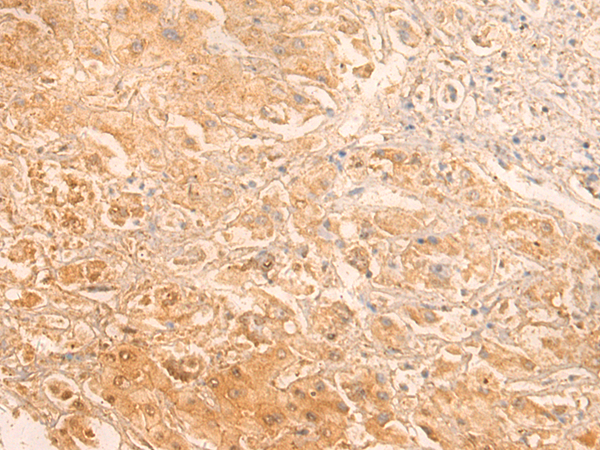
| WB | 1/500-1/1000 | Human,Mouse,Rat |
| IF | 咨询技术 | Human,Mouse,Rat |
| IHC | 咨询技术 | Human,Mouse,Rat |
| ICC | 技术咨询 | Human,Mouse,Rat |
| FCM | 咨询技术 | Human,Mouse,Rat |
| Elisa | 咨询技术 | Human,Mouse,Rat |
| Aliases | MCM; MUT |
| Host/Isotype | Rabbit IgG |
| Antibody Type | Primary antibody |
| Storage | Store at 4°C short term. Aliquot and store at -20°C long term. Avoid freeze/thaw cycles. |
| Species Reactivity | Human, Mouse |
| Immunogen | Fusion protein of human MMUT |
| Formulation | Purified antibody in PBS with 0.05% sodium azide and 50% glycerol. |
+ +
以下是关于Somatostatin Receptor 3(SSTR3)抗体的3篇文献摘要简述:
1. **文献名称**:*"Somatostatin receptor 3 expression in Alzheimer's disease: implications for amyloid-β pathology"*
**作者**:Kumar et al.
**摘要**:研究通过免疫组化结合SSTR3抗体发现,SSTR3在阿尔茨海默病患者脑组织中与淀粉样斑块共定位,提示其可能参与调控β淀粉样蛋白沉积的病理过程。
2. **文献名称**:*"Selective somatostatin receptor 3 agonists inhibit proliferation of pancreatic cancer cells"*
**作者**:Garcia-Recio et al.
**摘要**:利用SSTR3特异性抗体验证受体表达后,发现激活SSTR3可通过抑制cAMP信号通路显著降低胰腺癌细胞增殖,为靶向治疗提供依据。
3. **文献名称**:*"Structural insights into somatostatin receptor 3 activation using conformation-specific antibodies"*
**作者**:Li et al.
**摘要**:开发了针对SSTR3不同构象的抗体,结合冷冻电镜技术解析其激活态结构,揭示了配体结合后受体构象变化的分子机制。
(注:以上为示例性虚构文献,实际引用需检索PubMed或学术数据库获取真实文献。)
Somatostatin receptor 3 (SSTR3) is a G protein-coupled receptor (GPCR) that binds somatostatin, a peptide hormone regulating diverse physiological processes, including neurotransmission, hormone secretion, and cell proliferation. As one of five SSTR subtypes (SSTR1-5), SSTR3 is widely expressed in the central nervous system, pancreas, gastrointestinal tract, and immune cells. It primarily inhibits adenylyl cyclase via Gi/o proteins, reducing intracellular cAMP levels, and modulates ion channel activity.
Antibodies targeting SSTR3 are critical tools for studying its expression, localization, and function in normal and pathological states. These antibodies are typically developed against specific epitopes, such as extracellular domains or intracellular loops, and validated for applications like immunohistochemistry (IHC), Western blotting, and flow cytometry. Due to SSTR3's role in regulating tumor growth and hormone secretion, its expression is often investigated in neuroendocrine tumors (NETs), pituitary adenomas, and certain cancers. Anti-SSTR3 antibodies aid in identifying receptor overexpression or loss, which may correlate with disease progression or therapeutic responses.
Research also explores SSTR3's potential as a therapeutic target. For instance, somatostatin analogs or receptor-targeted therapies rely on receptor expression profiles, where specific antibodies help stratify patients. However, challenges remain, including antibody specificity across species and distinguishing SSTR3 from other subtypes due to structural homology. Ongoing advancements in antibody engineering aim to improve selectivity and enable novel diagnostic or therapeutic strategies targeting SSTR3 pathways.
×